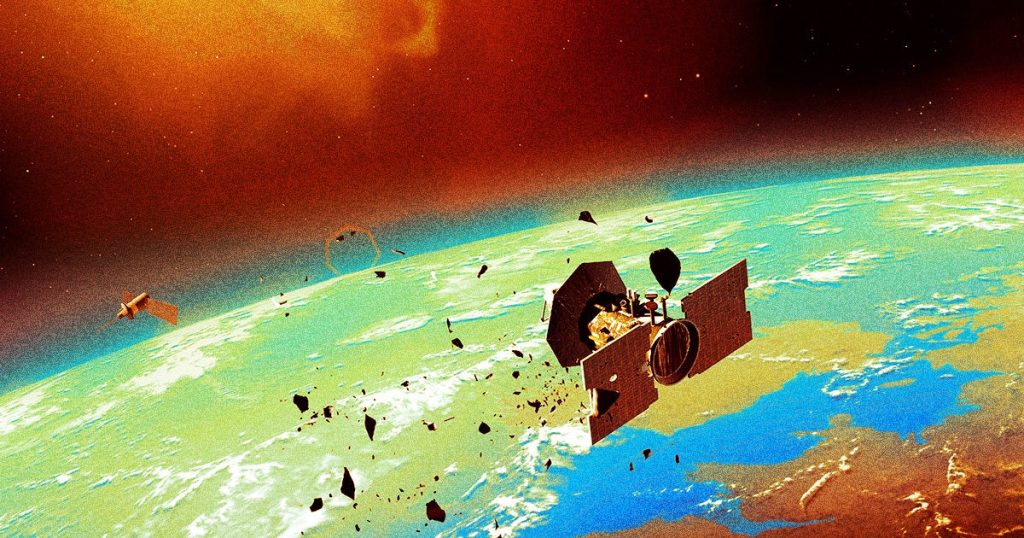
A Massive Space Junk Disaster in Orbit Is Inevitable Now, Scientists Warn (Image Credit: futurism-com)
Low-Earth Warning
Researchers from the orbital mapping firm LeoLabs are raising alarm bells about the dangerous amount of space junk littering our planet’s orbit that will inevitably create a catastrophe.
In an interview with Forbes, LeoLabs senior technical fellow Darren McKnight described the issue as a “ticking time bomb” waiting in the wings.
With our planet veritably surrounded by almost 30,000 objects bigger than a softball hurtling through space at extremely fast speeds, McKnight and his colleagues are looking for solutions to head off tragedy — but they might not be able to make it in time.
“This grim reality,” LeoLabs COO Dan Ceperly told Forbes, “means that collisions are not a question of if but when.”
Small But Fast
While LeoLabs is able to track objects as small as roughly four inches in diameter, anything smaller is off its radar.
And the risks to human life are considerable, regardless of the size of the piece of space debris.
“Any size fragment above a few millimeters is likely lethal to astronauts,” Ceperley told Forbes.
While no human lives have been lost to errant pieces of space debris so far, we’ve already seen some close calls. Case in point, the damage done to the Canadarm2 robotic arm outside the ISS which had a hole ripped through it by a tiny piece of shrapnel in 2021.
Past Prescient
McKnight noted that the highest parts of low-Earth orbit are also full of unknowns thanks to both the United States and the former Soviet Union thrusting their spent rocket upper stages off into space and never reaching an agreement about cleaning it up.
In June 2022, two of these discarded upper stages — one Soviet, one American — came within 500 feet of collision, highlighting just how present the past is in space.
A collision could have disastrous knock-on effects, a phenomenon known as the Kessler Syndrome.
With China throwing its hat into the space race, LeoLabs is urging international cooperation even while recognizing that it will be difficult to get all the superpowers to the table.
“The biggest diplomatic challenge,” Secure World Foundation senior director Ian Christensen told Forbes, “is convincing the three major spacefaring countries (the United States, Russia, and China), who are responsible for 90 percent of the risk, to begin remediating their own large debris objects.”
And if they don’t — well, let’s just say we’ve seen that movie before.





